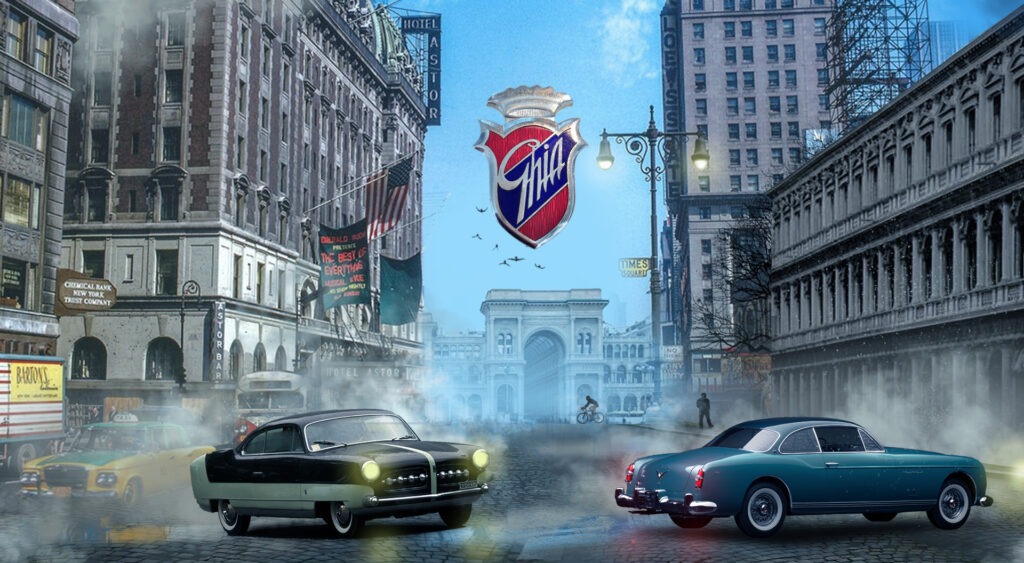
The beginning
In tracing the genealogy of coachbuilding firms, it turns out that they originated in the early years of the last century as a development of already existing workshops for the construction of horse-drawn carriages, or that they appeared almost out of nowhere on the initiative of some brave and inexperienced young people, supported by a sort of frenzy towards the new motor vehicles that would revolutionize the life of our grandparents. One example of this last alternative is Giacinto Ghia, born in Turin on 18 September 1887 and required to work to help the family after the death of his father when he was thirteen years old. In 1910 he was hired by the Società Torinese Automobili Rapid (STAR) – founded six years earlier by Giovanni Battista Ceirano, one of the great pioneers of the automobile in Italy – where Ghia gained experience first as a specialized mechanic and then as a test driver. In the latter role he began to work for Diatto in 1914, where in the first year he was however the victim of a serious accident in which he fractured both legs; after a long stay at the Mauritian Hospital in Turin, he resigned and rented a laboratory-workshop in via Ilarione Petitti, where he began to work for Diatto as a subcontractor. He associated himself with Giovanni Gariglio, a relative of the Ceirano family, and set up Carrozzeria Ghia & Gariglio at the beginning of World War I.
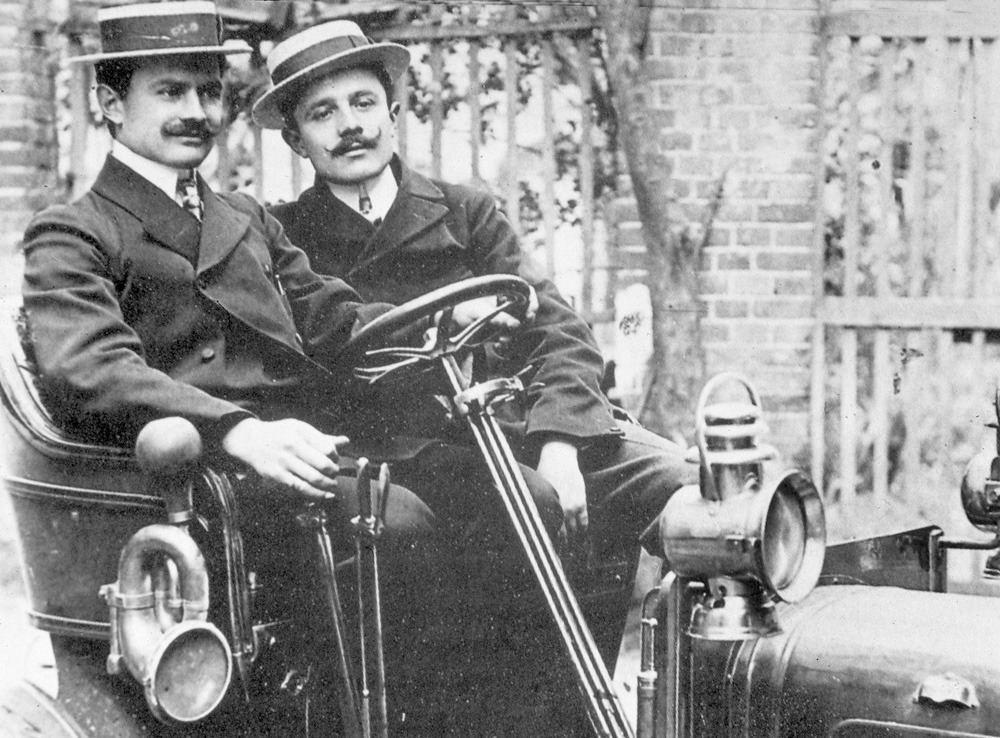
In those days, horseless cars bodies were built according to traditional techniques, that is, provided with a wooden body mounted by the foremen on a chassis, set up by the pioneers who at the time were engaged in the assembly of mechanical parts.
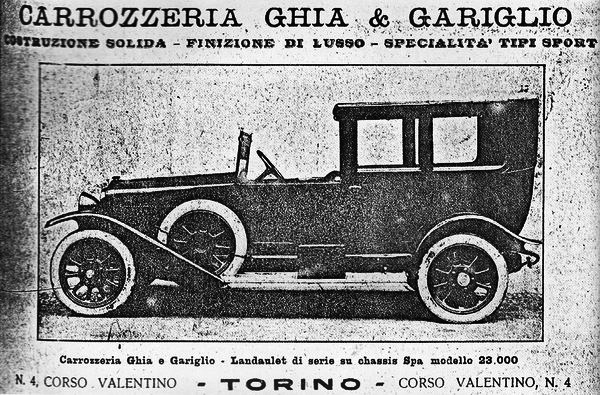
At the end of the World War I, the car acquired a decidedly innovative role in Western society thanks to the countless proofs of efficiency and reliability provided during the conflict. In 1919, Ghia took part, with a Diatto 4DC 25HP, in the 10th edition of the Targa Florio, a race from which he had to retire almost immediately after the start due to an accident. Carrozzeria Ghia & Gariglio developed rapidly, moving in 1921 from the premises in via Petitti to those in corso Valentino 4, a street that in the following years took the name of corso Marconi, where Fiat’s headquarters operated for a long time. That same year, Ghia signed the contract with Fiat for the supply of a series of sports bodies fitted on the chassis of the 501 Spider with a 1460 cm (26.5 HP) 4-cylinder engine, capable of pushing the car to the 95-100 km / h. About 2600 units of that model were produced until 1926. In 1923 he changed partner in the company, replacing Gariglio with Mr. Actis, and the company took on the new company name Carrozzeria Ghia & Actis, which appeared for the first time among the exhibitors at the Milan Automobile Salon in April 1925 with an Alfa Romeo RL Super Sport and a Fiat 519.
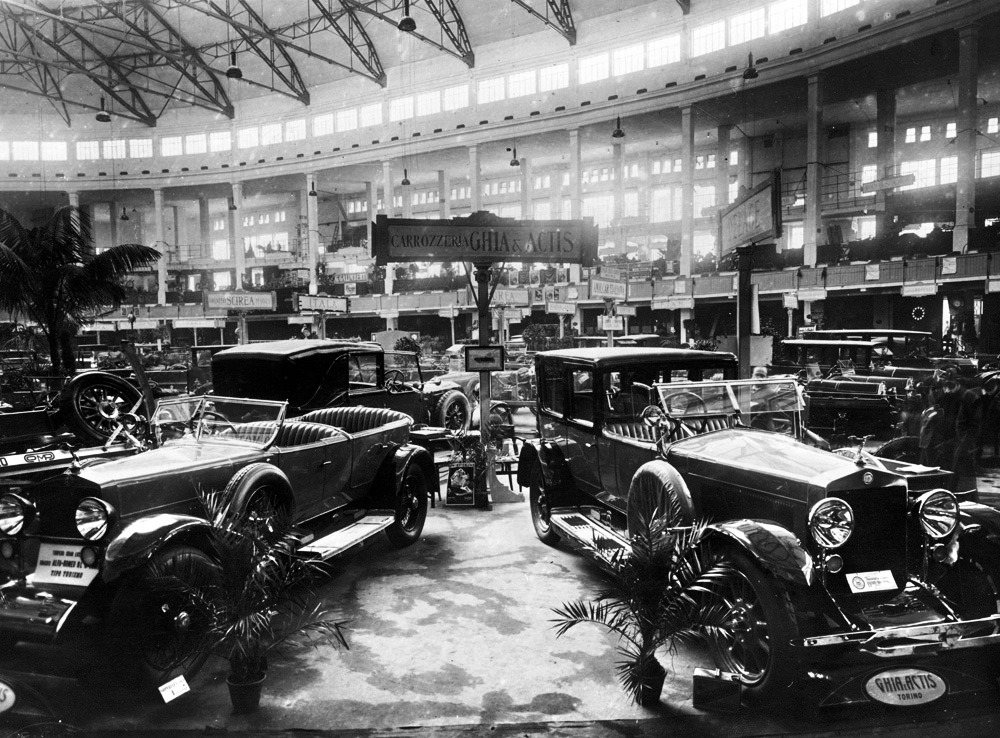
The new company structure did not last long, however, since already in 1926 it was dissolved as Actis abandoned, and the definitive name of the company settled as Carrozzeria Ghia, Turin. At the second Milan Fair Cup (April 1926), held on the Monza circuit, the small and elegant Fiat 509 with a 990 cm 22 HP engine and a body worked by Ghia, Torres Weymann achieved a brilliant triumph; it was possible to amortize with a light and flexible body the torsional stresses to which the cars were subjected by the rough road surface of the time. However, documents to show that Ghia has used this construction scheme have not survived. Moving to the new headquarters in via Tommaso Grossi, the company began to rely, for bodywork design, on the collaboration of Mario Revelli di Beaumont, a young Turin designer of profound culture and a key figure of the aesthetic renewal that for years marked the Italian automotive environment with dozens of elegant cars on a wide variety of chassis. Endowed with an extraordinary ease of graphic expression, Revelli was able to interpret the aspirations of those who then turned to the world of coachbuilders, that is an audience of sports and the aristocratic elite, for which he conceived models that perfectly responded to the needs of representation and discretion with some solutions which showed a very strong personality. His eagerness to find inspiration from forms and materials typical of aeronautical construction led him to create cars with a highly profiled line, in which the conceptual conditioning emerged, however, constituted by the bulky presence of the chassis on the sides. Revelli’s freedom of interpretation represented a real breath of fresh air in the 1930s, but it had already manifested itself in the 1929 Alfa Romeo 6C 1500 Super Sport Siluro Ghia, took part with race number 76 in the Mille Miglia of that year, finishing with the Pirola-Guidotti crew in 13th place overall and 1st in its category. Revelli was also credited with the project of the Fiat 508 Spider Corsa type Mille Miglia, later known as the Coppa d’Oro (Golden Cup), presented by Ghia at the Concorso d’Eleganza di Villa d’Este in September 1932. That model was then sold to Fiat, which produced it with slight variations from 1933 to 1937. In 1935, the year in which Lancia launched the supporting-bodied Augusta with a V4 engine of 1196 cm3 (35 HP), Ghia presented five different aerodynamic interpretations on the new model; one of these, attributed to Mario Revelli called “Spider Gran Sport aerodinamico“, was awarded at the VII Concorso d’Eleganza in Turin.
The era of Mario Felice Boano
Giacinto Ghia had achieved a solid economic and social position which allowed him a fairly high standard of living. Changing from a young mechanic into a successful coachbuilder, he had seamlessly inserted himself into the refined environment of his customers, perhaps in contrast to many of his colleagues, even big names, who remained anchored to their modest origins. The peaceful period of those successful years ended abruptly in June 1940, when Italy entered the war on the side of Germany, and put an end to all luxurious and splendid activities. Giacinto Ghia left the management of the company to his brother-in-law Giorgio Alberti, moving to a small villa in Pino Torinese, where he led a peaceful existence as a displaced person until one night in 1943 when an air raid almost completely destroyed his factory, unfortunately located near the railway line; it was a terrible blow for Ghia, which led to his death after a few months (February 21st, 1944) from an attack of angina pectoris. He had indicated in his will that the management of the firm should pass to Alberti and into the capable hands of Felice Mario Boano, who in the meantime had greatly refined the techniques in the construction of wooden masks and acquired a great sensitivity in drawing. However, he hesitated before taking on the new responsibility.
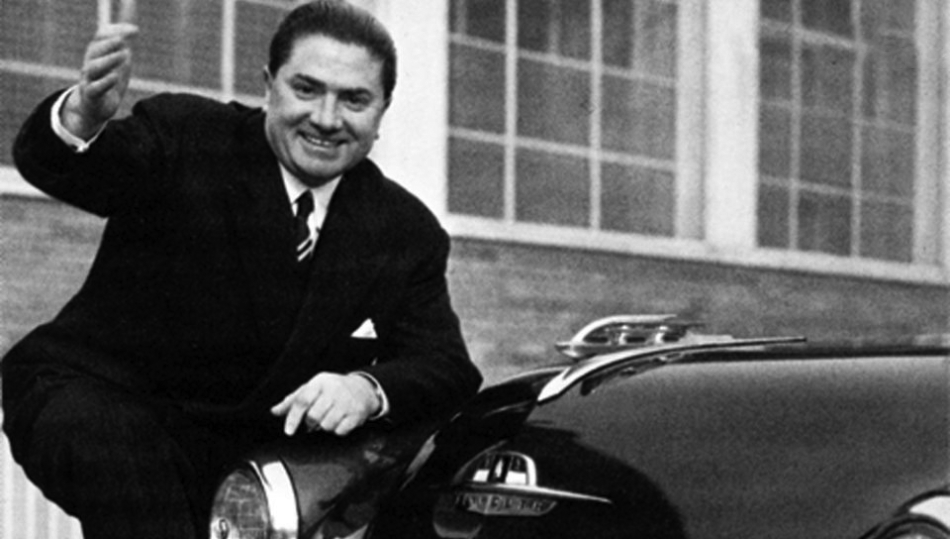
In 1946, times had become very hard for operators in the sector due to the weakness of the custom-built car market, but also due to the modest availability of chassis by the national factories. The whole world of production had been shocked by the war and was struggling to recover the minimum levels required for the resumption of activities, with a few models set up on the Fiat 1500 and Lancia Aprilia chassis, while there was greater availability for the Alfa Romeo 6C 2500, a prestigious car but outside the purchasing power of the public in such a critical context.
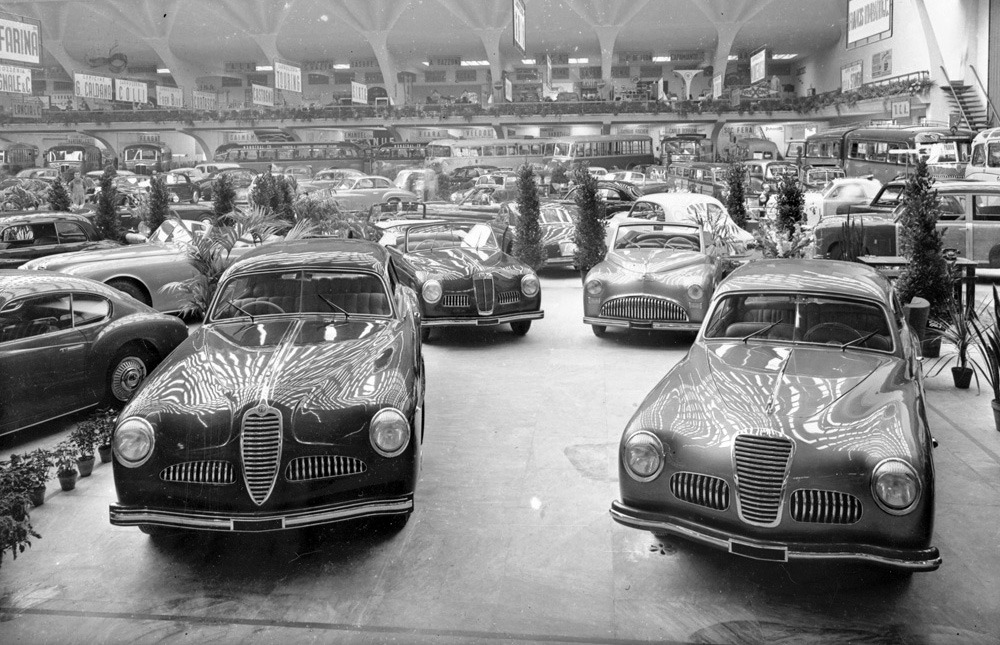
One of the first measures adopted by Boano in the new entrepreneurial venture was the decision to give a courageous stylistic approach to the new cars, which began to assert themselves on the occasion of the frequent contests of elegance, valid promotional events for the activities of coachbuilders at that time. Felice Mario’s talent and passion found international recognition at the Montecarlo Competition in April 1947, where Ghia exhibited five different models, three of which stood out with as many prizes awarded by the jury. The long and sinuous shapes of those bodies – made peculiar by the completely closed wheel arches according to a certain French stylistic school of the Thirties – collected numerous awards.
Read more: “The Flamboyant Style“
In those years, the brief adventure of the Ghia Aigle body shop took place, founded in the homonymous town in the canton of Vaud in 1948 as a branch of the Turin Company on the initiative of De Filippi, an industrialist from Mondovi, Cuneo. The cars, almost all designed by Boano and Michelotti, were mostly set up in the workshop in via Tommaso Grossi due to the lack of skilled labor in Switzerland. It was a very short and marginal period; already in 1953 the Ghia Aigle became independent. Boano’s creative flair in interpreting the most disparate chassis and the refined execution of his sports bodies found confirmation in the Fiat 1500 and 1100 E, as well as in some of the latest generation Lancia Aprilia both in coupé and cabriolet versions, all cars that fueled the fundamental characteristics of the house that gained the fame of the Italian stylistic school in the years immediately after the war.
The partnership with Chrysler
At the end of the 1940s, Fiat was experiencing a phase of complete reorganization following the thrust given by Vittorio Valletta and thanks to the substantial investments envisaged by the Marshall Plan, which made it possible to enter into important agreements with some overseas automotive industries. As part of this collaboration, the Detroit-based Chrysler group took the initiative to entrust Italy with the construction of some experimental prototypes, and Fiat suggested that the Americans rely on the skilled craftsmanship of Pininfarina and Ghia. Both companies received from the USA a Plymouth chassis (the most popular brand of the Chrysler group), on which they worked in a sort of competition for the construction of a four-door sedan.
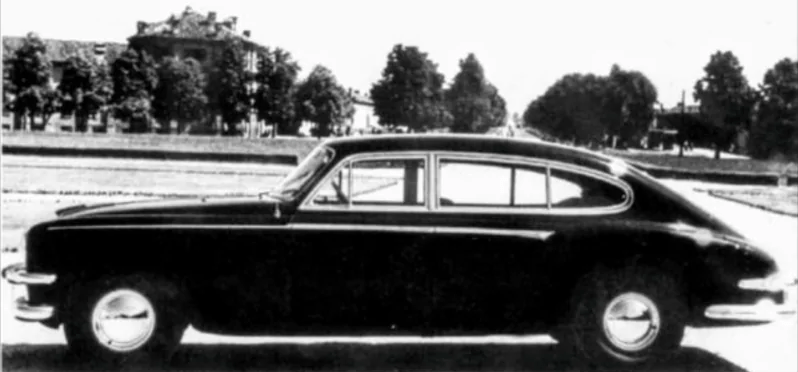
In the challenge between the two great names of the Turin bodywork, the victory went to Ghia, which also received the appreciation of the clients for the refined painting of the Plymouth XX-500 prototype, made with 17 successive coats of color. That was a personal success of Felice Mario Boano, who was invited to Detroit to discuss with the Chrysler senior management the modalities for subsequent orders; he took Luigi Segre, a thirty-year-old engineer who arrived at Ghia from Siata, which in those years became very popular thanks to the Cucciolo, a single-cylinder to be mounted as an auxiliary engine on a normal bicycle. A determined and hard-working man, Segre was gifted with great skills in business negotiations, and Boano offered him the opportunity to enter 40% as a partner in the factory, of which he had become sole owner after acquiring Giorgio Alberti’s share in 1947.
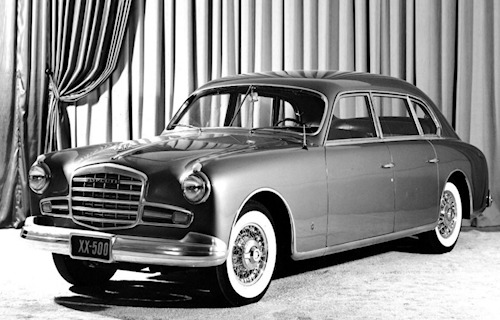
The early fifties was a period of increasing collaboration between Chrysler and Ghia, personally managed in Italy by Luigi Segre. The first of the special orders was the Chrysler K-310 coupe, based on designs and models made in America by the stylist Virgil Exner (head of Advanced Design at the large American group which also included the brands Plymouth, De Soto, Dodge and, since 1955, Imperial) who was very interested in having a workshop in Turin capable of making prototypes from their own models. At the age of fifty, Exner had experienced a moment of fame in America at the studio of Raymond Loewy when he showed his great talent in the design of the innovative Studebaker for the immediate postwar period. He was fired, however, when Loewy realized that Exner was designing other models for Studebaker outside his studio. Then, Exner found a job at Chrysler, where he designed the two prototypes K-310 and C-200, built between 1951 and 1952 as experimental models by Ghia. The two machines generated great interest in the US and this success marked the beginning of a ten-year fruitful collaboration between the Detroit group and Ghia. The theme of the elegant European-style coupé led in 1952-53 to the distinguished Chrysler Special, with sober and slender lines despite its imposing dimensions, and to the splendid D’Elegance.
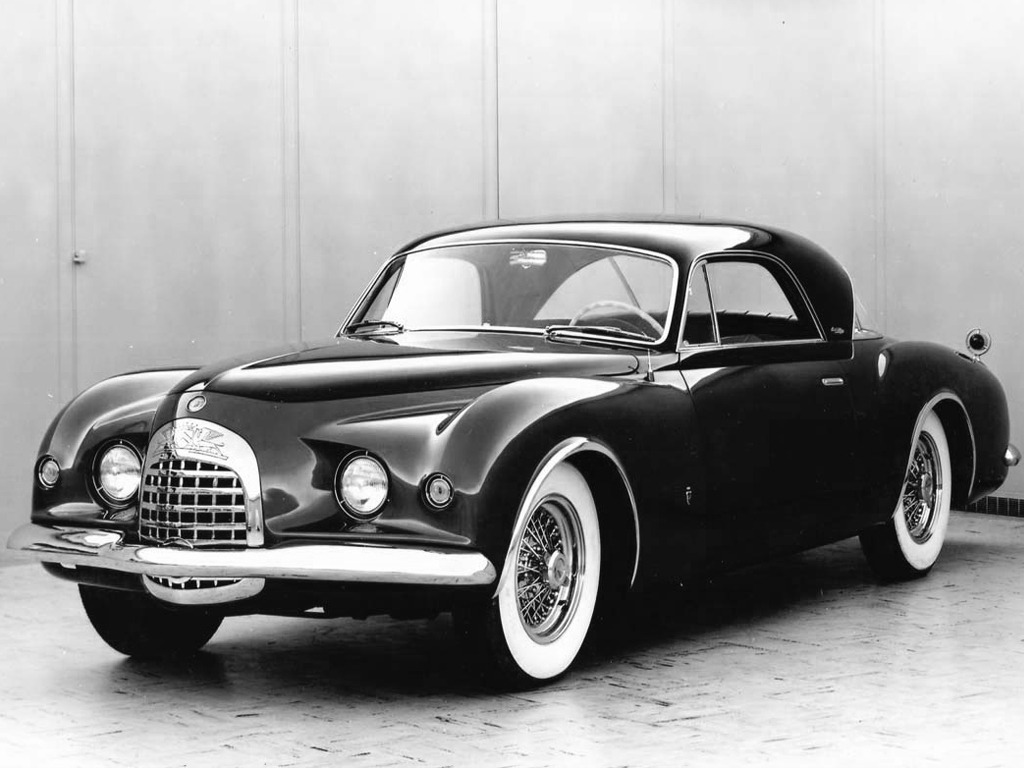
The 1953 Turin Motor Show showcased the Dodge Firearrow spider, which returned the following year with another three interpretations (spider, coupé and convertible). From that stylistic study derived the Firebomb prototype, with an unprecedented treatment of the front; built in small series mainly for the American market, the Firebomb met with widespread approval among the most prominent personalities in the world of sport and entertainment. The success of the Chrysler Special prompted the house to start production of the derivative ST Special. The small series set-up was entrusted to Ghia, which produced 400 units (some sources reduce the total to a few dozen). The ST was only marketed in Europe by France Motors, the Chrysler importer in France. In 1954, Exner delivered his research study for the Plymouth Explorer prototype. Ghia was also a contender in the early 1950s to body the amazing chassis built by Enzo Ferrari in Maranello and perhaps on that occasion Boano failed to interpret the strong personality of that mechanics; certainly he was unable to convey that magical charm that Giovanni Michelotti was capable of at the time in designing the Cavallino cars for Alfredo Vignale. Ghia built a dozen 1950 Ferrari 195 Inters, a small series of 13 1951 212 Inters, as well as a 340 model and a 1953-54 375 Mille Miglia; all cars set up in the workshop of Ezio Ellena, Boano’s son-in-law, who served as a subsidiary production unit.
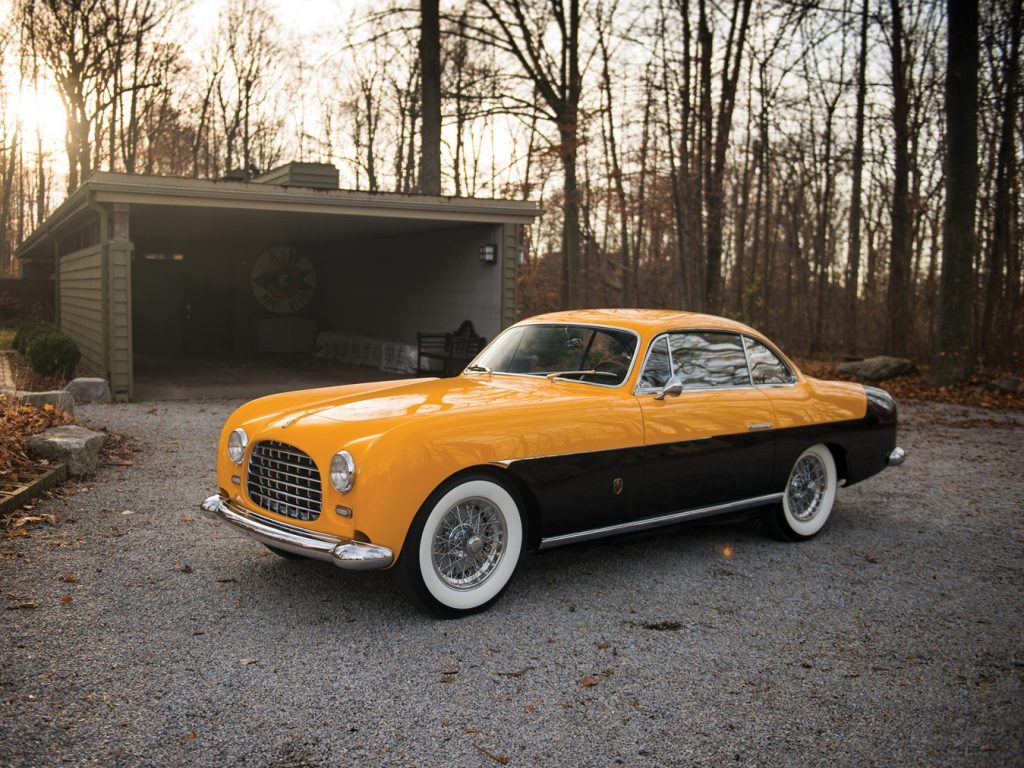
Boano’s creative capacity and the commercial fortunes managed by Segre allowed Ghia to reach very high peaks in the early 1950s. Among the incognito interventions – or in any case known only to specialists in the sector – there was the contribution of Felice Mario to the incomparable and ageless design of the Lancia Aurelia B20 GT; a hundred cars were produced by Ghia before the very different production capacity of Pininfarina took over. Another happy intervention by Boano found expression in the futuristic forms of the 1954 Alfa Romeo Giulietta Sprint prototype, assisted by Franco Scaglione of Carrozzeria Bertone, which eventually imposed the small series production of the model that would soon become the most wanted sports car on the entire European scene (over 40,000 units built from 1954 to 1964). Boano had also exhibited at the Ghia stand of the 1953 Turin Motor Show the Alfa Romeo 1900 C Supergioiello series, in which the originality of the front stood out with the prominent Alfa shield as compared to the fenders, which held the headlights, an echo of the solution created by the Turin coachbuilder on some Chrysler prototypes designed by Virgil Exner. At the same Turin exhibition, the B Junior also appeared on the floor of the Lancia Aurelia, a typically Ghia line coupé designed by Gianpaolo Boano, son of Felice Mario.
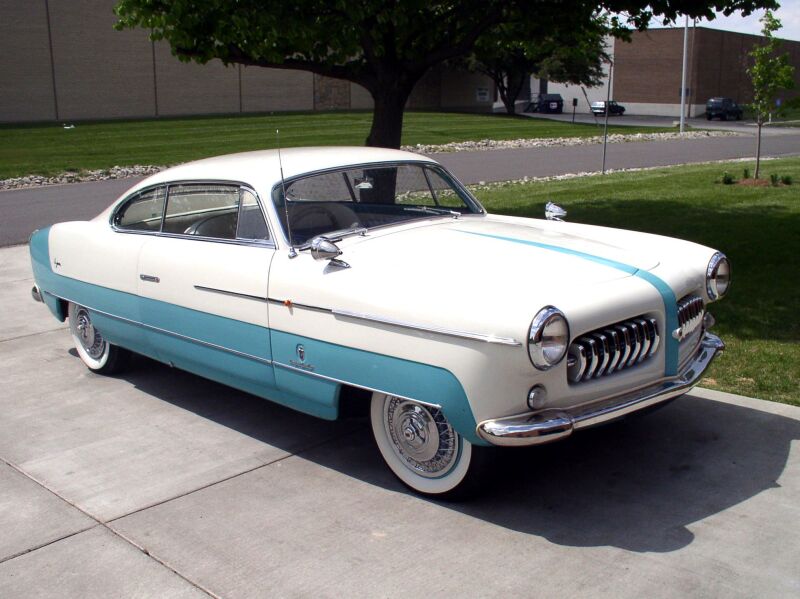
The line of the D’Elegance coupé was largely revived by Ghia in a daring initiative that started in 1951 and aimed at offering a special coupé version on the mechanics of the Volkswagen Type 1, whose fortunes on the international market quickly passed from rampant to torrential. It all started at the Geneva Motor Show, when Luigi Segre met Wilhelm Karmann Junior, son of the founder of the already famous German bodywork factory in Osnabrück. Volkswagen had always refused to deliver a chassis of his popular car to allow the construction of a prototype by numerous coachbuilders, but Segre managed to get around the obstacle, having a production sedan delivered by Société France Motors, which represented the German manufacturer in France and managed the imports of the Chrysler group for Europe.
Segre’s move was to show the upper executives of Wolfsburg not the sketches of a two-door coupé version but the finished and running car, and his tactic was rewarded by the success it aroused among the commercial managers of the factory. The stylistic message conveyed by the Ghia working group required eighteen months of industrial planning for mass production at Karmann; the car set up on the mechanics of the VW Type 1 was finally marketed in August 1955 and exhibited at the Frankfurt Motor Show in September, where it received immediate approval. No one could have predicted such a sensational success, to the point that only fourteen months after its launch date Karmann was able to celebrate the production of the 10,000th unit. In 1960, 12,000 units were delivered, two thirds of which were exported. The demand from the various markets extended to the VW Type 3 model with the 1500/1600 engine and a completely restyled Karmann Ghia bodywork. Over 45,000 units were distributed between 1962 and 1969.
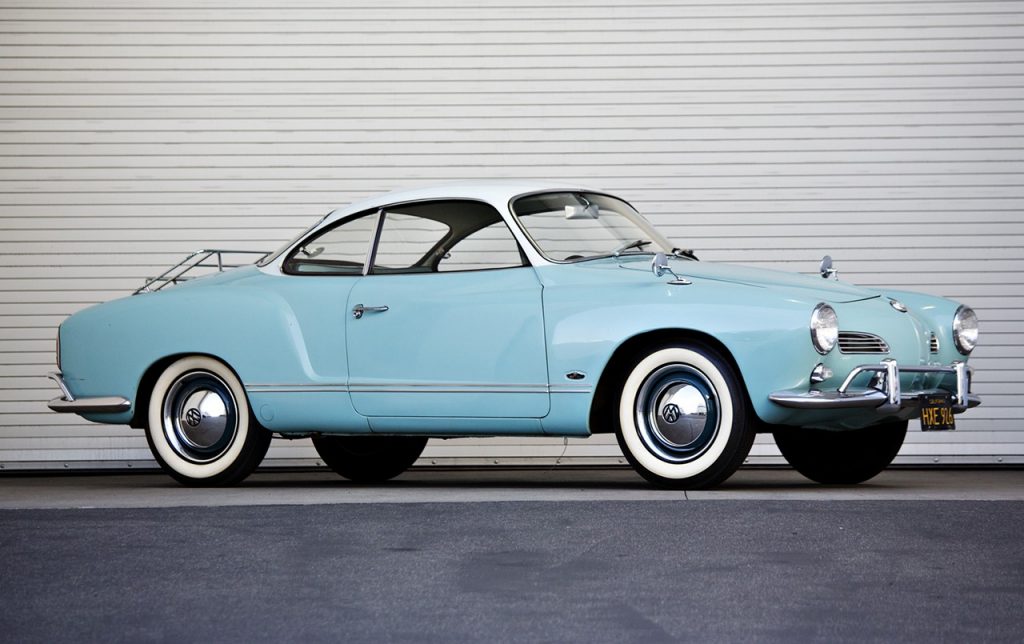
In parallel with Chrysler, Ghia produced its own designs on the chassis of the American group, interpreting the philosophy of the Dual Motors brand, born on the initiative of Eugene Casaroll, who was fascinated by the 1954 Firearrow IV prototype and obtained the rights to start production with the name Dual Ghia. From 1956 to 1958, 117 cars were built. In 1961, the small house introduced the Ghia L 6.4, a mighty coupe powered by a 335 hp 6.4-liter V8; it left the scene as early as 1963 with only 26 units completed. In the meantime, Ghia set up numerous custom-built cars for high-ranking personalities, including the Pope’s Chrysler Imperial (1954), the parade Cadillac and two Mercedes-Benz 300C for the royal house of Saudi Arabia, as well as the Rolls-Royce Silver Wraith destined in 1952 to King Faruk of Egypt, at the time an exile in Rome, and the Chrysler Special K-300 built in 1956 for the Shah of Persia Reza Pahlewi.
Read more: “The Chrysler K-300 Special by Ghia“
In that euphoric moment of brilliance, Boano’s destiny came to a sudden halt due to the breakup, perhaps premeditated, of the relationship with Luigi Segre, the fiery recently acquired partner. Following a quarrel with the latter for futile reasons, Felice Mario had decided to get rid of his partner by buying his stake in the company, but Segre anticipated the move – with the support of the Treves bank and a certain city financial environment that provided the necessary funds – and the situation was suddenly reversed, with Segre liquidating the respective shares in Boano, thus becoming Ghia’s sole owner. Expelled from their own company, father and son founded their own company in 1954, which four years later was incorporated by Fiat with the establishment of the Centro Stile in via La Manta, Mirafiori.

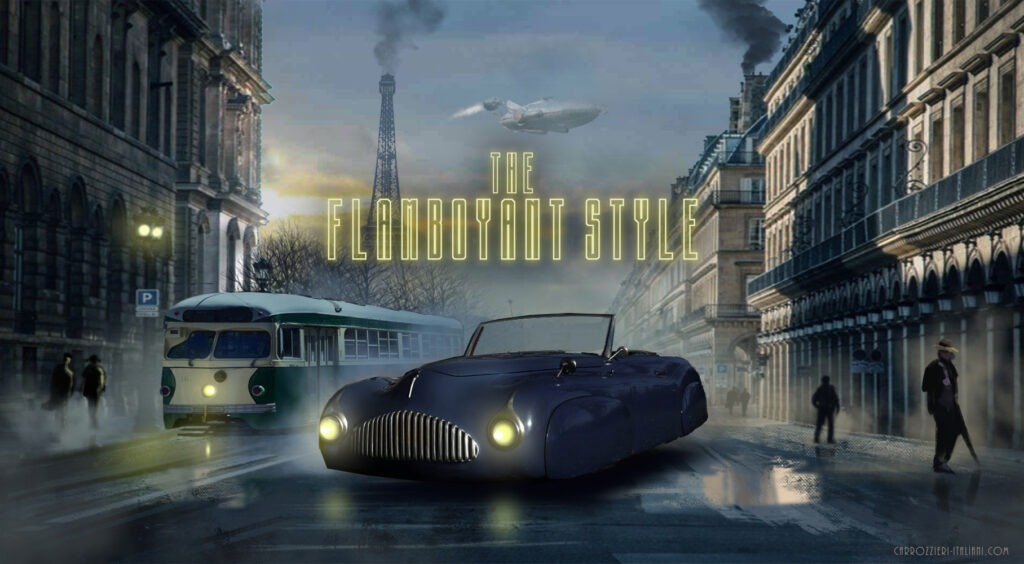
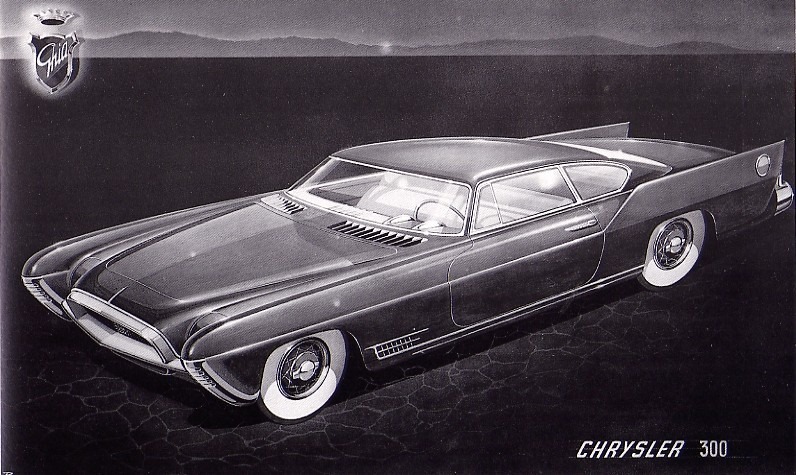
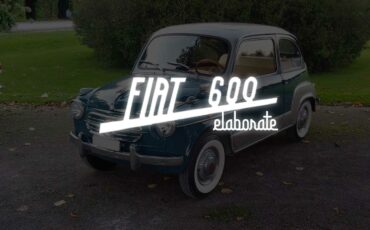
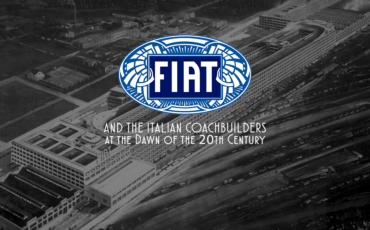

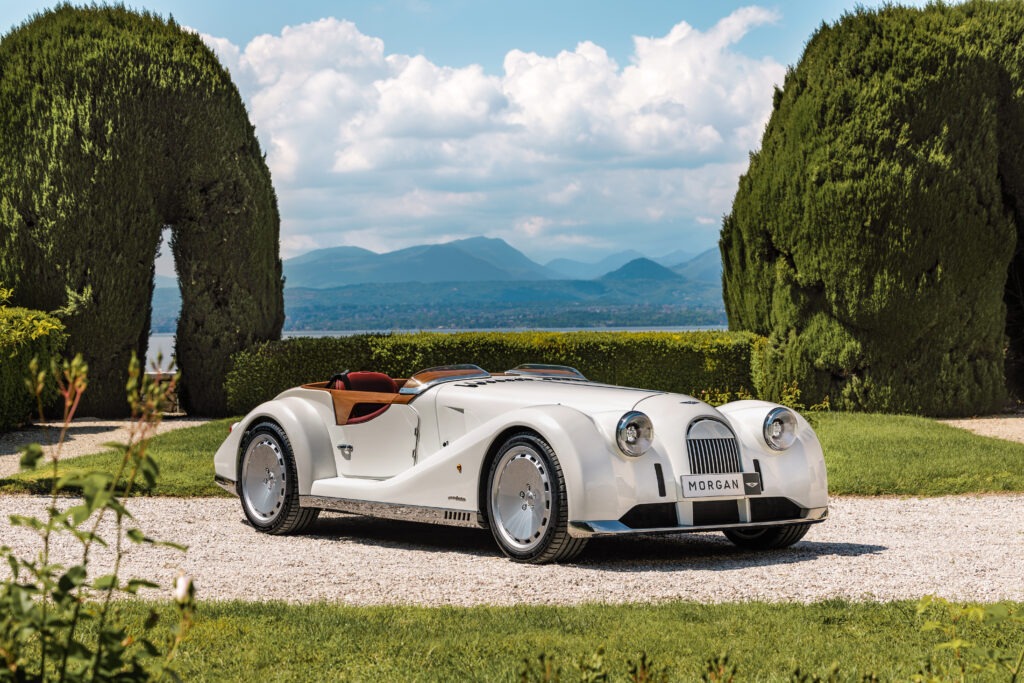
I love the Supergioiello models, can you make a special about em?